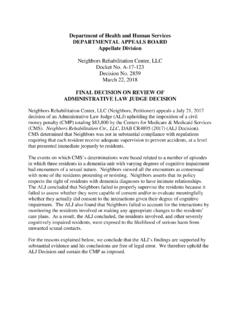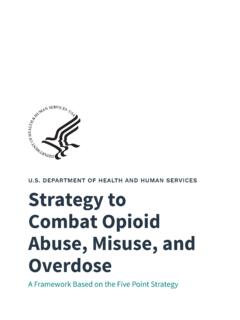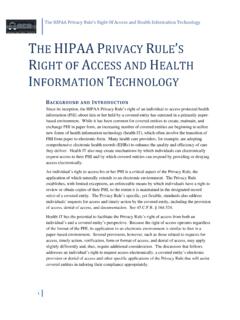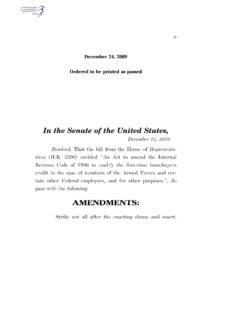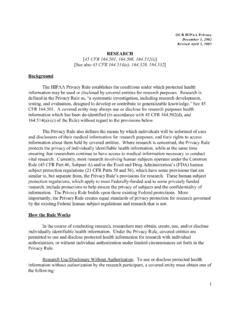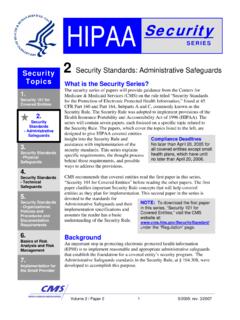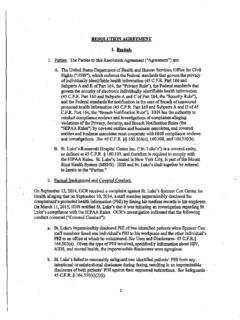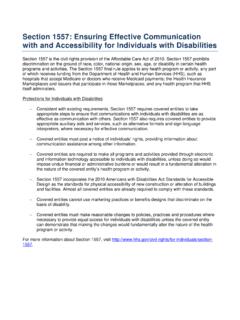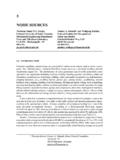Transcription of Alerts Template 2021
1 LEADERSHIP FOR IT SECURITY & PRIVACY ACROSS HHS HHS CYBERSECURITY PROGRAM OFFICE OF INFORMATION SECURITY [TLP: WHITE, ID#202203011700, Page 1 of 10] HHS Office of Information Security: health Sector Cybersecurity Coordination Center (HC3) HC3: Analyst Note March 01, 2022 TLP: White Report: 202203011700 The Russia-Ukraine Cyber Conflict and potential Threats to the US health Sector Executive Summary Russia s unprovoked attack on Ukraine has, as expected, spilled over into cyberspace. The scope of conflict now includes allies on both sides, many of whom also bring cyber capabilities with them. As of March 1, 2022, the Department of health and Human Services is not aware of any specific threat to the US Healthcare and Public health (HPH) Sector.
2 However, in the interest of being proactive and vigilant, we are briefly reviewing the cyber capabilities of Russia and its allies and specifically two malware variants most likely to be utilized in any collateral attacks which may impact HPH in this campaign. Report Adversaries There are three potential threat groups to the HPH currently related to the Russia-Ukraine conflict: organizations that are part of the Russian government, cybercriminal groups based out of Russia and neighboring states, and organizations that are part of the Belarussian government. This is not to say that other threat actors can or will not get involved, but these three groups are the primary focus at this time Russia has for several decades been one of the most capable cyber powers in the world.
3 Going back to the Moonlight Maze attacks against the US Department of Defense in the 1990s, Russian state-sponsored actors have been believed to be behind some of the most sophisticated cyberattacks publicly disclosed. Specifically, they are known to target adversarial critical infrastructure in furtherance of their geopolitical goals. They are suspected to be behind cyberattacks on Estonian government, media and financial targets in 2007, Georgian government sites in 2008, Kirgizstan Internet Service Provider attacks in 2009, Ukrainian government, military and critical infrastructure attacks in 2014 and again on Ukraine as well as many other countries with NotPetya in 2017.
4 The most prominent cybercriminal group to publicly support Russia are the Conti ransomware operators. Historically, they have targeted US healthcare organizations aggressively. They are known to conduct Managed Service Provider (MSP) compromise, big game hunting (targeting of large organizations), multi-stage attacks (leveraging other malware variants as part of the attack) and double and triple extortion (data theft combined with the ransomware attack). More information on the Conti operators can be found here. It is very possible that other cybercriminal groups have or will join the conflict, and will bring with them their custom tools, tactics, techniques, and weapons.
5 The Belarus government, an ally of Russia, is known to have cyber capabilities. The group known as UNC1151 is suspected of being part of the Belarusian military. UNC1151 have been reportedly attempting to compromise the e-mail accounts of Ukrainian soldiers with a phishing campaign. More information on them can be found here. Wipers There are two malware variants both wipers that have been observed in significant use against Ukraine in the last two months: HermeticWiper and WhisperGate. HermeticWiper This is a new form of disk-wiping malware (at least one version is identified with the filename ) that was used to attack organizations in Ukraine shortly before the launch of a Russian invasion on February 24, 2022.
6 There are a number of variants in the wild and therefore all of the details included in this report may not apply to all variants. We have included a number of industry reports at the end of this section as well as in the references section at the end of this report to allow analysts to dig deeper and better understand individual variants. [TLP: WHITE, ID#202203011700, Page 2 of 10] HHS Office of Information Security: health Sector Cybersecurity Coordination Center (HC3) HC3: Analyst Note March 01, 2022 TLP: White Report: 202203011700 HermeticWiper comes in the form of an executable file, which is signed by a certificate issued to Hermetica Digital Ltd.
7 It contains 32-bit and 64-bit driver files which are compressed by the Lempel-Ziv algorithm stored in their resource section. The driver files are signed by a certificate issued to EaseUS Partition Master. The malware will drop the corresponding file according to the operating system (OS) version of the infected system. Driver file names are generated using the Process ID of the wiper Once run, the wiper will damage the Master Boot Record (MBR) of the infected computer, rendering it inoperable. The wiper does not appear to have any additional functionality beyond its destructive capabilities. It leverages a signed driver which is used to deploy a wiper that targets Windows devices, manipulating the master boot record in such a way that causes boot failure.
8 The digital certificate is issued under the Cyprus-based company named Hermetica Digital Ltd . (Note: This company likely does not exist or is not operational if it does) The certificate is valid as of April 2021 but it does not appear to be used to sign any files. HermeticWiper adjusts its process token privileges and enables SeBackupPrivilege which gives the malware read access control to any file, regardless of whatever is specified in access control list. One malware sample is 114 KBs in size and roughly 70% of that is composed of resources. It abuses a benign partition management driver, HermeticWiper enumerates a range of physical drives multiple times, from 0-100.
9 For each Physical Drive, the \\.\EPMNTDRV\ device is called for a device number. EPMNTDrv (EaseUS Partition Master NT Driver) is a process that is part of EaseUs Partition Manager software platform by EaseUS. It then focuses on corrupting the first 512 bytes, the Master Boot Record (MBR) for each physical drive and then enumerates the partitions for all possible drives. HermeticWiper differentiates between FAT (File Allocation Table) and NTFS (New Technology File System) partitions. In the case of a FAT partition, it calls to Windows APIs to acquire a cryptographic context provider and generate random bytes in order to corrupt the partition.
10 For NTFS, it parses the Master File Table before calling the Windows APIs to acquire a cryptographic context provider and generate random bytes. Research also shows that it modifies several registry Figure 1: HermeticWiper Digital Signature (Source: SentinelLabs) Figure 2: SeBackupPrivilege process token privilege modification (Source: IBM) [TLP: WHITE, ID#202203011700, Page 3 of 10] HHS Office of Information Security: health Sector Cybersecurity Coordination Center (HC3) HC3: Analyst Note March 01, 2022 TLP: White Report: 202203011700 keys, including setting the SYSTEM\CurrentControlSet\Control\CrashCo ntrol CrashDumpEnabled key to 0, which effectively disables crash dumps before the abused driver s execution starts.

